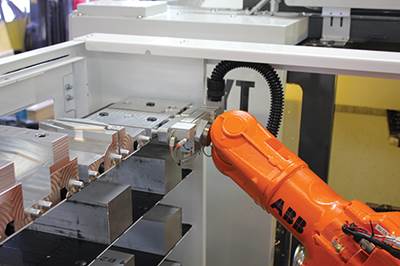Flexible Automation on a VMC
Robot loading and unloading of the workholding that is used in the machining center facilitates the ability to change jobs during an unattended run.
Some of the more interesting stories that Production Machining covers sometimes involve companies that develop products in-house to improve their own production processes, but then realize such substantial benefit from these products that they are able to successfully market them to other shops as well. Such is the case with VersaBuilt, a manufacturer of robotic systems that require no custom grippers and no robotic programming yet can handle almost any part.
The company’s VBX-160 is now finding its niche in shops that are making many different parts in various volume ranges, helping these companies reduce labor costs by as much as 90 percent while increasing equipment utilization by 200 percent or more. But a look back at the company’s beginning will provide a clearer picture of the product’s application.
Filling a Need
VersaBuilt has been officially a stand-alone company only since the beginning of this year, but it has been making robotic systems since 2013 to supply its parent company, Rekluse (Boise, Idaho). For almost 14 years, Rekluse has been manufacturing aftermarket motorcycle clutch components and dealing with significant and predictable swings in production requirements through the course of each year. During the colder months, enthusiasts spend more time modifying their motorcycles, thus ramping up business at Rekluse. The peak month of March brings as much as 100 percent more demand for parts than July, the slowest month.
These significant swings in production demand presented difficult personnel challenges for Rekluse as it struggled during the busy season to bring in dedicated temporary shopfloor employees who possessed the skills necessary to fulfill the quality requirements expected from this growing business. The result was significantly higher scrap rates and unacceptable ratios of manufacturing labor to sales dollars shipped.
Al Youngwerth, company president, saw robotics as a potential solution, recognizing that the person loading the part into the machine was the most expensive component of the manufacturing process. “Not only is it a tough job where the employee needs to understand the importance of keeping the machine running over anything else,” Mr. Youngwerth says, “but that employee is also more expensive than the equipment, the rent, the electricity, the coolant, the tooling and the amortization of the machine. It’s a detail companies can’t afford to get wrong.” By substituting the temporary employees with automation, he felt the company could reduce much of the pain of the labor costs.
The Solution
What Rekluse and subsequently VersaBuilt was able to develop is a robotic system that has reduced labor cost by 65 percent, resolving the recurring issue of temporary employee placement. Mr. Youngwerth says he had no intention of getting into the business of making robots, as he had semi-retired only a month earlier. But he and his team were brainstorming one day and came up with the idea to use soft jaws as the robot gripper and the jaws for the vise.
The key to the system is the MultiGrip soft jaw technology, which acts as both the robot’s end effector and the workholding in the CNC vise. A pocket is machined into the MultiGrip soft jaw to match the workpiece and is used to feed workpieces to and from the shelf system and the vises in the CNC. This design enables the transfer of the workpiece from one operation to the next without a re-grip station.
Multiple part numbers (sometimes as many as four or five) can be run within a single unattended shift simply by including the required soft jaws and material within the shelving unit setup. The robot changes its own fixtures to manage different blanks loaded onto the cell’s shelves, allowing high-mix and process parts to run complete without any operator intervention. System users machine their own soft jaws as needed, so tooling from VersaBuilt is not required. In fact, it’s not even recommended once the system is up and running.
Brian Havey, director of sales, explains that they want the customers to feel ownership of the entire system and be comfortable introducing parts on their own. “We deliver the system ready to run and help with the early parts as necessary,” he says. “We design the first and second op jaws and go over that design with the customer, explaining the concept. Generally, the first job is up and running the day the system is delivered, and the customer is prepared to machine jaws and add parts as needed in the future.”
So instead of the constant need for operators to feed the machines, each machine, on a daily basis, typically takes between 20 and 30 minutes to unload the previous day’s work and then load the current day’s, change out fluids and perform other daily checks, then close it up, enter the job information and press cycle start. In most cases for Rekluse (depending on part complexity and demand), a single setup will run for an entire day. The company now has 10 people running 15 robot cells plus four lathes and a small number of CNCs that have not yet been updated with robots.
Helping Companies Grow
Just as VersaBuilt was rooted in the increasing demands of Rekluse, its products have gone hand in hand with the growth of external customers as well. By the start of 2015, Rekluse had realized such significant cost savings and production increases from its automation, and the robotic systems had been refined so well, Mr. Youngwerth decided to begin using the VersaBuilt name to market the equipment to other companies. The first customer was another Idaho-based manufacturer of motorcycle components that purchased a VMC fed by the robot system instead of buying a new HMC.
Another VersaBuilt customer specializes in the production of pedestrian safety equipment—in particular, crosswalk signals and their related activation devices and hardware. Campbell Company, founded in Seattle, Washington, in 1973 as a distributor of pedestrian push buttons (PPBs), began its reconfiguration to more aggressive growth when Phil Tate purchased the company in 1998 and moved the manufacturing operations to Boise. The company became instrumental in establishing the 2-inch pedestrian push button as a traffic industry standard (now a federal requirement as defined in the Americans with Disabilities Act Access and Guidelines). Product development has been furthered by discussions with traffic engineers in the field—the 4 EVR PPB is designed with a pressure-sensitive Piezo electric switch that solved freezing issues with mechanical PPBs in Alaska that would stick in a “call” state.
The company continued to progress and look for ways to be more efficient in its operations. At the beginning of 2012, Mr. Tate hired Brad Giesen, management analyst, in part to oversee the machining operations. It wasn’t long before Mr. Giesen saw an anomaly between the skill levels of some of the company’s machinists and the production levels of the equipment. “A few of our machinists were highly skilled and highly experienced, but all they did was make parts,” he says. In addition, it was clear that, as the company grew, it would be difficult to find and pay for the number of additional skilled machinists required.
While he liked having the skills of those machinists available to him, the production shop environment did not frequently require changes in part programming or setups. So he felt that the skills of these machinists were not being fully utilized. He also was wary of the ever dwindling supply of skilled machinists, particularly in that region of the country.
In an effort to maximize the capabilities of both personnel and equipment, Mr. Giesen began looking for new ways to enhance production. He visited VersaBuilt about the time the company was just beginning its relationship with ABB, the supplier whose robots are currently in every one of its installations. Although the robotic systems were only in prototype phase at that point, the vision of their benefits was clear. Mr. Youngwerth was able to lay out the solution for Campbell Company. “It was an eye-opening experience,” Mr. Giesen says. “They were very helpful in getting us to understand where we could go as a machine shop. I walked out of there and immediately texted Phil, telling him I had seen the future of our machine shop.”
Many things came together in a short amount of time for Campbell. The company had recently purchased a Haas EC 400 horizontal mill with multiple pallets that was being set up to run unattended for extended periods. A new CAM system had also recently been implemented. But Mr. Giesen says it was the robotic capabilities that forced the company’s evolution. “We want to have process with every part, from the fixtures and the setup to the verification of tools and parts,” he says. “Based on our inputs, we need to know that we’ll have a good part when it’s complete. We don’t want to wait for a skilled machinist to take the part out of the machine and look at it to say it’s good.”
The VBX-160 was soon installed on one of Campbell’s three Haas VF-2SS vertical machining centers. It was set up specifically to run two standard families of related parts—the button cup that cradles the crosswalk signal button and the bezel that surrounds it. Each of the part families previously required two lathe operations and two mill operations. Each of those operations required operator handling between steps. But the VBX-160 has brought significant labor reduction. Now the operator loads the blank onto a shelf and doesn’t touch it again until the part is complete. No more loading it into the lathe, turning it over for the second lathe operation, and then the same on the mill for both sides.
Mr. Giesen says a big part of making this transition a success has been his company’s relationship with VersaBuilt. “They’ve been incredible from a customer service and support standpoint,” he says. But both companies have learned from each other. While VersaBuilt has helped Campbell substantially in unattended machining solutions, Campbell has also played a role in showing VersaBuilt creative ways the system can be enhanced simply through application of the technology.
System Installation
As with any new system, production took some time to ramp up. During its first year of operation, VersaBuilt was able to install about one system a month. It now can handle one a week, and Mr. Youngwerth says by the end of this year the company will double that capacity. Part complexity has an effect on setup and training as well. “We recently quoted a complex gun part to include 40 to 50 hours of engineering,” Mr. Youngwerth says, “but for another company doing three simpler parts, all within the same part family, we were able to quote less than 20 hours.”
The installation itself typically takes about a day, but two days are allotted and the technician stays on site for a third day to provide training. “While we remain available for support and can monitor the systems remotely, we want the customer to be self-sufficient and fully comfortable with introducing new parts to the production process.”
The electrical system has been simplified. While larger, it provides a cleaner electrical pneumatic design that is easier to work with. VersaBuilt has also developed an auto-calibration process that relieves the technician from a tedious setup that used to take the better part of a day. Special jaws are inserted that use a high definition proximity sensor to locate the shelves and vises. Calibration now takes about a half hour and is more reliable than before.
As part of the ongoing product development, VersaBuilt is finding ways to make the system fit an even wider range of requirements. At IMTS 2016 in September, the company will officially announce the availability of a more modular system. Currently, each system comes standard with a specific robot, controller, cleaning tank and vise fixturing, but additional options will soon be available to allow customization to fit customers’ requirements. The company is also expanding the product’s availability. Originally focused specifically in the Idaho region, by working with select dealers it is now opening the market in some Midwestern states (Ohio, Kentucky, West Virginia and Indiana) as well as California. The plan is to expand throughout the entire U.S. in 2017.
Related Content
Pursuit of Parts Collector Spearheads New Enterprise
While searching for a small parts accumulator for Swiss-type lathes, this machine shop CEO not only found what he was looking for but also discovered how to become a distributor for the unique product.
Read MoreAutomation Idea for Halloween?
Maybe not. But, the candy-throwing robots at MetalQuest’s Nebraska facility do enable the contract machine shop to stand out at career fairs and similar events.
Read MoreInside the Premium Machine Shop Making Fasteners
AMPG can’t help but take risks — its management doesn’t know how to run machines. But these risks have enabled it to become a runaway success in its market.
Read MoreZoller Event Shines Lights on Shopfloor Connectivity
The company’s open house event highlighted smart manufacturing solutions from CAM to part.
Read MoreRead Next
Adaptable Automation
A system for automatically swapping both workpieces and workholding enables a robot-loaded VMC to be quickly reconfigured for a new or modified job. The same system lets the robot change jobs in the midst of an unattended run. Thanks to the extra capacity from unattended production, the motorcycle part maker that developed this system has finally stopped shipping products late during the busiest part of its year.
Read MoreEmerging Leaders Nominations Now Open
Here’s your chance to highlight a young person in your manufacturing business who is on the path to be a future leader moving your company forward.
Read MoreDo You Have Single Points of Failure?
Plans need to be in place before a catastrophic event occurs.
Read More


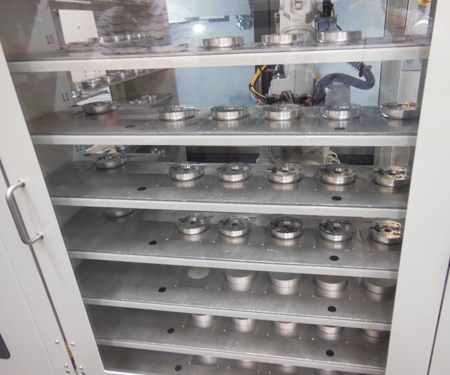
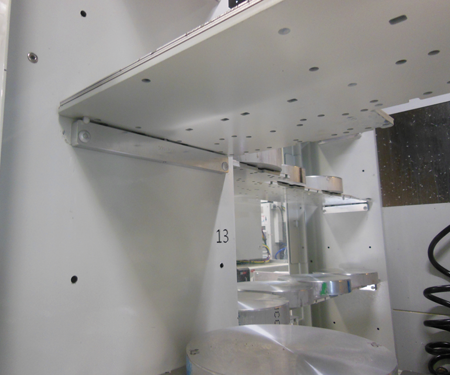
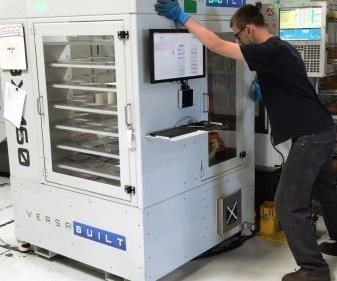
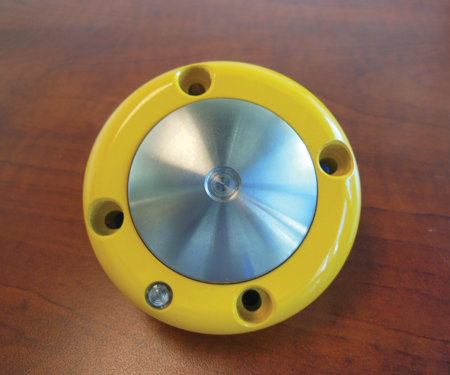

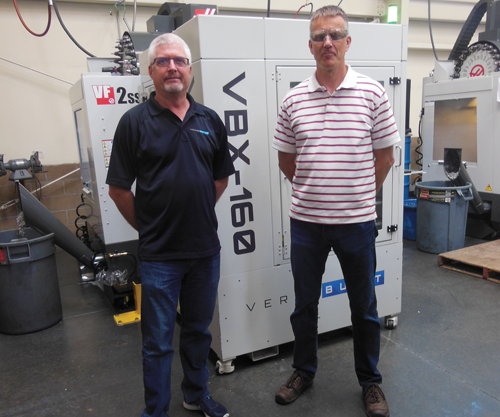
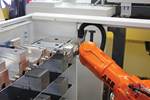










.jpg;maxWidth=300;quality=90)






